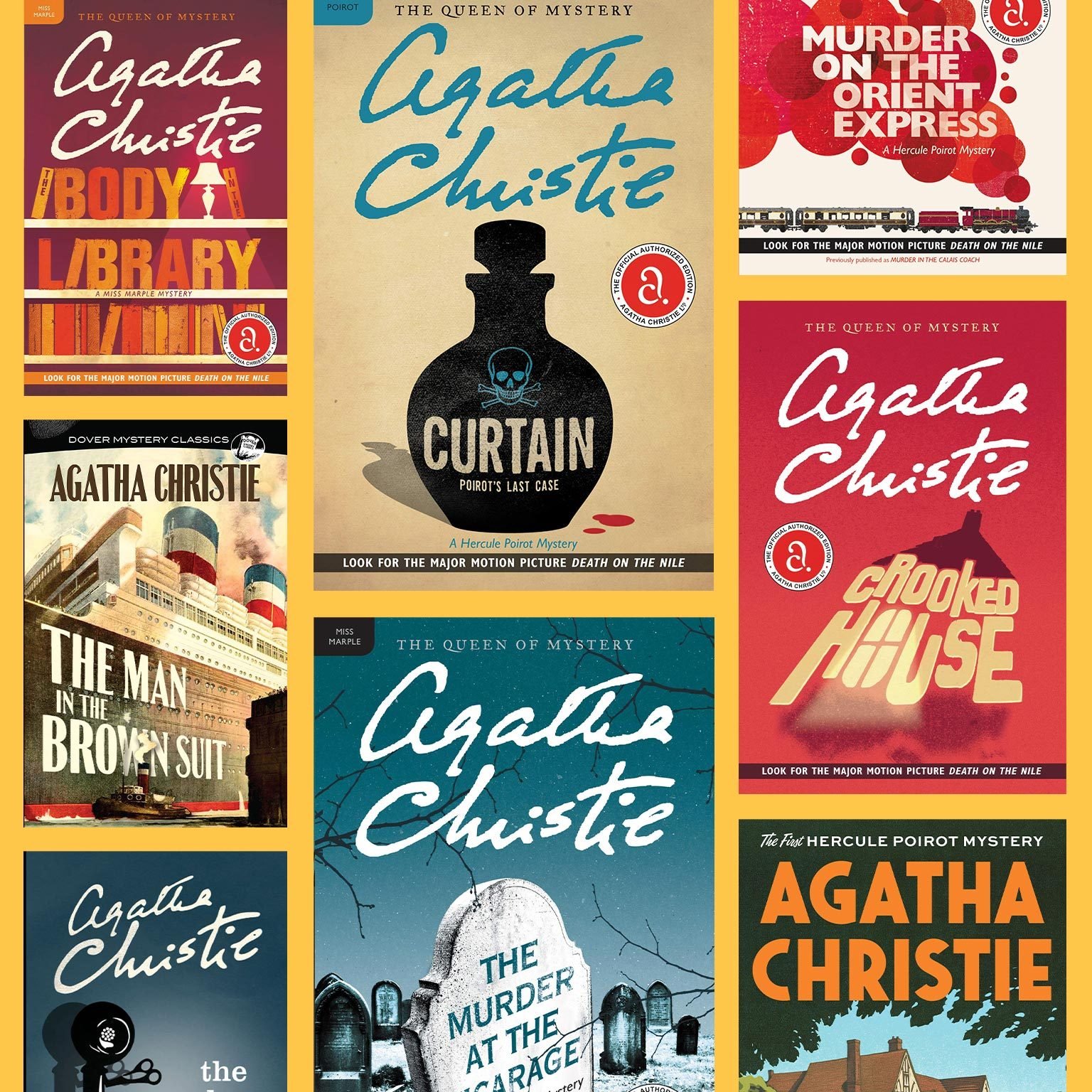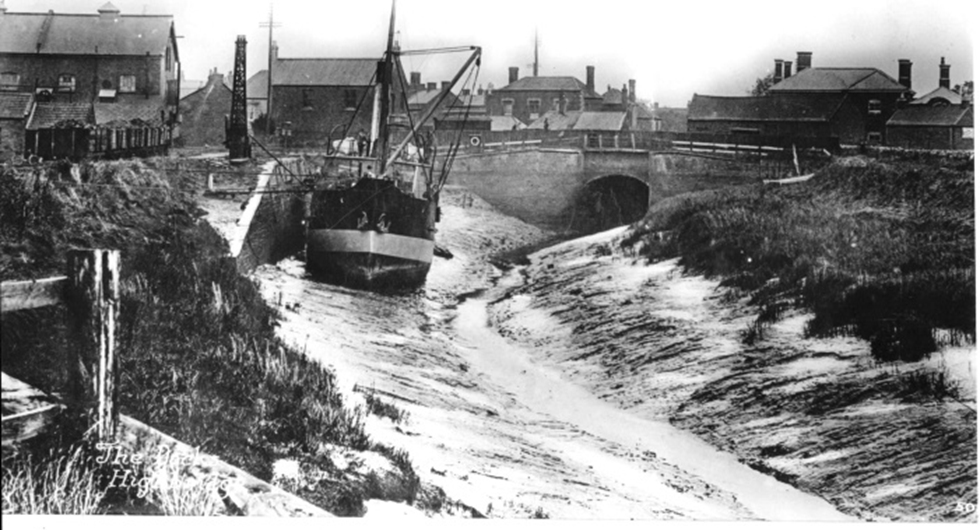How Agatha Christie's Genius Shaped Shyamalan's "The Village"

Table of Contents
The Masterful Use of Misdirection and Red Herrings
Both Agatha Christie and M. Night Shyamalan are undisputed masters of misdirection, expertly weaving red herrings into their narratives to keep audiences perpetually guessing. Christie's novels are renowned for their intricate plots and unexpected twists, leaving readers constantly questioning their assumptions. This mastery of misdirection is strikingly evident in "The Village."
- Christie's Techniques: In And Then There Were None, Christie uses a seemingly random selection of individuals and a series of mysterious deaths to create a labyrinthine puzzle, leading readers down numerous false trails before the shocking revelation. Similarly, The Murder of Roger Ackroyd employs an unreliable narrator to manipulate the reader's perception of events, a technique mirrored in Shyamalan's film.
- The Village's Twist: The twist ending in "The Village," where the fearsome creatures of the woods are revealed to be a carefully constructed illusion, perfectly encapsulates Christie's approach. Shyamalan uses seemingly insignificant details – the villagers' clothing, their cautious behavior, even the seemingly random placement of objects – to mislead the audience.
- Subtle Misdirection: Both Christie and Shyamalan understand the power of seemingly insignificant details. A misplaced object in a Christie novel, a fleeting glance in "The Village," can hold significant weight, subtly manipulating the audience's understanding and planting seeds of doubt. This shared focus on meticulous detail contributes to the heightened suspense in both their works. The narrative structure in both cases relies heavily on the strategic withholding of information to build this suspense.
Exploring the Theme of Isolation and Secrecy
The isolated settings and secretive communities are central to both Agatha Christie's mysteries and "The Village," creating an atmosphere ripe with suspense and unspoken dread. This shared thematic element significantly contributes to the overall impact of both the novels and the film.
- Christie's Isolated Settings: Think of the remote island in And Then There Were None, or the snowbound manor in The Pale Horse. These isolated locations restrict the characters' movements and limit their access to outside help, magnifying the sense of vulnerability and heightening the suspense.
- Secrecy in "The Village": The secrecy surrounding the existence of the "creatures" and the rules of the community in "The Village" mirrors the hidden truths and concealed motives often found in Christie's novels. The villagers' collective silence and the tightly controlled flow of information maintain an aura of suspense.
- Impact on Characters and Plot: In both Christie's works and "The Village," the isolated setting and maintained secrecy not only serve to build suspense but also profoundly impact the characters' actions and relationships. The pressure cooker atmosphere of these confined spaces forces characters to confront their own truths and anxieties.
Unreliable Narrators and the Manipulation of Perspective
Both Christie and Shyamalan masterfully utilize unreliable narrators and manipulate the audience's perspective to control the flow of information and generate suspense. This technique significantly contributes to the mystery and intrigue in both their works.
- Christie's Manipulative Narration: Poirot, Christie's famous detective, often manipulates suspects, controlling the narrative to his advantage. This deliberate control of information mimics the strategic withholding of critical details employed by Shyamalan.
- Perspective Shifts in "The Village": "The Village" employs several perspective shifts, revealing information gradually and strategically, controlling the audience's understanding of the events unfolding. This carefully controlled release of information maintains the suspense and forces the audience to constantly reassess their initial assumptions.
- Building Suspense Through Controlled Information: Both Christie and Shyamalan demonstrate an impressive understanding of how to build suspense by carefully controlling the information they provide. The gradual revelation of truths creates a more intense and engaging experience for the audience, making the final reveal all the more impactful. The use of an unreliable point of view, whether through a character or by manipulating the narrative itself, is key to this controlled information delivery.
The Power of the Supernatural vs. Psychological Explanation
A fascinating commonality between Agatha Christie's mysteries and "The Village" is the skillful blurring of lines between supernatural explanations and psychological realities. This ambiguity significantly enhances the overall sense of unease and mystery.
- Christie's Supernatural Ambiguity: Many of Christie's novels initially hint at supernatural elements, only to reveal a rational explanation later. This calculated ambiguity keeps the reader constantly engaged and questioning the nature of reality within the story.
- "The Village's" Creatures: "The Village" initially presents the creatures in the woods as supernatural entities, playing on the audience's expectations of horror tropes. However, the eventual reveal offers a grounded, psychological explanation, highlighting the power of fear and societal control.
- Ambiguity and Fear: Both Christie and Shyamalan utilize this ambiguity to magnify the fear and unease felt by both the characters and the audience. The uncertainty concerning the true nature of the threat contributes to a more pervasive and lingering sense of dread.
The Enduring Legacy of Agatha Christie's Influence on "The Village"
In conclusion, the similarities between Agatha Christie's writing style and M. Night Shyamalan's "The Village" are undeniable. Christie's masterful use of misdirection, her exploration of isolated communities and secrecy, her manipulation of perspective through unreliable narrators, and her calculated use of ambiguity concerning supernatural elements all find echoes in Shyamalan's film. This subtle yet powerful influence significantly contributes to the suspense, the plot twists, and the overall success of "The Village." Revisit Agatha Christie's novels and rewatch "The Village," paying close attention to these shared techniques; you'll gain a new appreciation for the profound and lasting influence of Agatha Christie's genius on modern storytelling, specifically within the framework of psychological thrillers and mysteries. Further exploration of the shared thematic and stylistic elements between Agatha Christie and M. Night Shyamalan promises to uncover even more fascinating connections.

Featured Posts
-
 New Burnham And Highbridge History Photo Archive Opens Today
May 20, 2025
New Burnham And Highbridge History Photo Archive Opens Today
May 20, 2025 -
 Politique Camerounaise Macron Referendum Et Troisieme Mandat En 2032
May 20, 2025
Politique Camerounaise Macron Referendum Et Troisieme Mandat En 2032
May 20, 2025 -
 Todays Nyt Mini Crossword Answers March 13
May 20, 2025
Todays Nyt Mini Crossword Answers March 13
May 20, 2025 -
 Man Uniteds Cunha Pursuit A Journalists Concerning Report
May 20, 2025
Man Uniteds Cunha Pursuit A Journalists Concerning Report
May 20, 2025 -
 Historic Photos Of Burnham And Highbridge Now Accessible Archive Opens Today
May 20, 2025
Historic Photos Of Burnham And Highbridge Now Accessible Archive Opens Today
May 20, 2025
Latest Posts
-
 Jasmine Paolinis Rome Victory A New Chapter In Italian Tennis
May 20, 2025
Jasmine Paolinis Rome Victory A New Chapter In Italian Tennis
May 20, 2025 -
 Angely I Restorany Biznes Plyuschenko Sikharulidze I Kuznetsovoy
May 20, 2025
Angely I Restorany Biznes Plyuschenko Sikharulidze I Kuznetsovoy
May 20, 2025 -
 Luchshie Machi Mirry Andreevoy Istoriya Pobed I Biografiya
May 20, 2025
Luchshie Machi Mirry Andreevoy Istoriya Pobed I Biografiya
May 20, 2025 -
 Uspekhi Mirry Andreevoy Biografiya I Analiz Igr
May 20, 2025
Uspekhi Mirry Andreevoy Biografiya I Analiz Igr
May 20, 2025 -
 Mirra Andreeva Tennisnaya Karera I Znachimye Machi
May 20, 2025
Mirra Andreeva Tennisnaya Karera I Znachimye Machi
May 20, 2025
